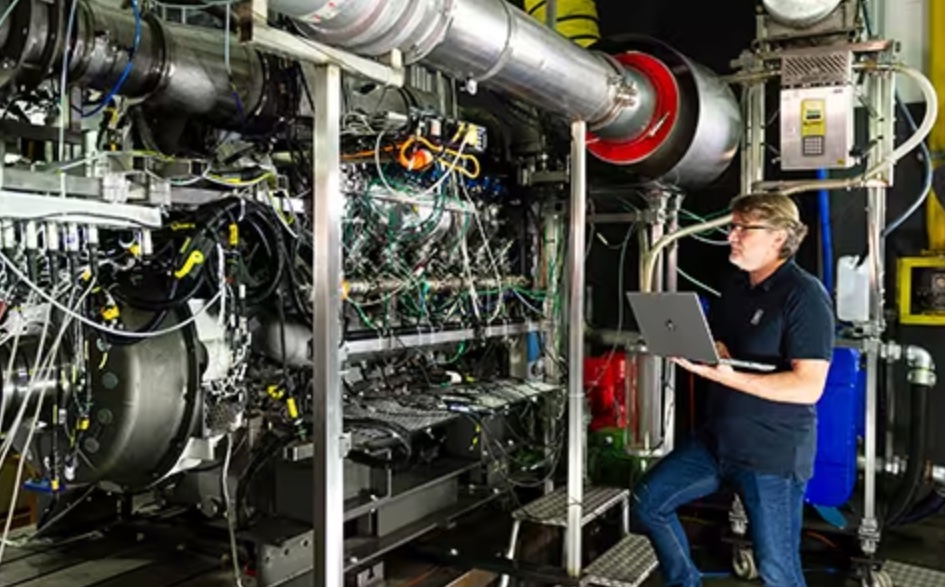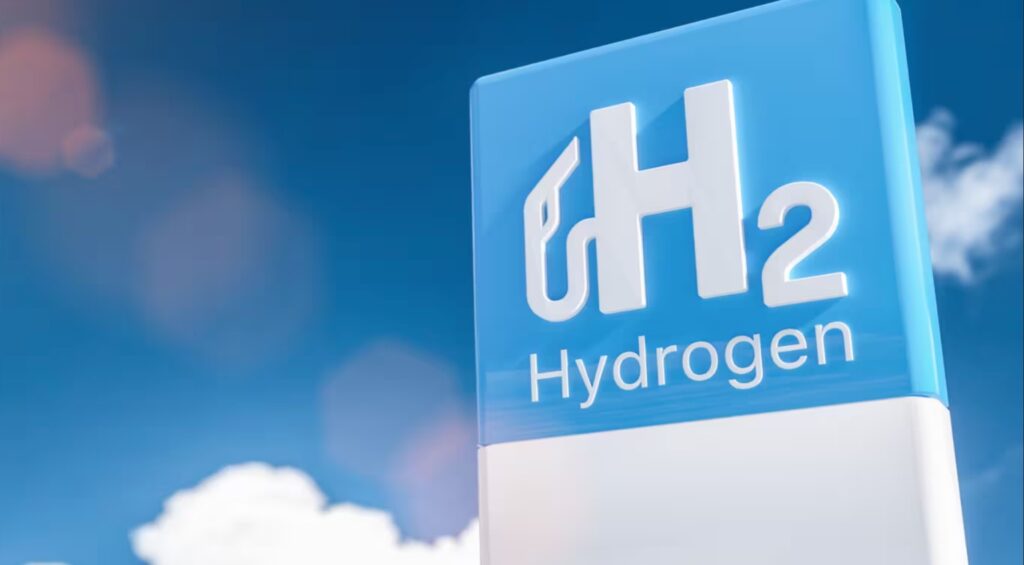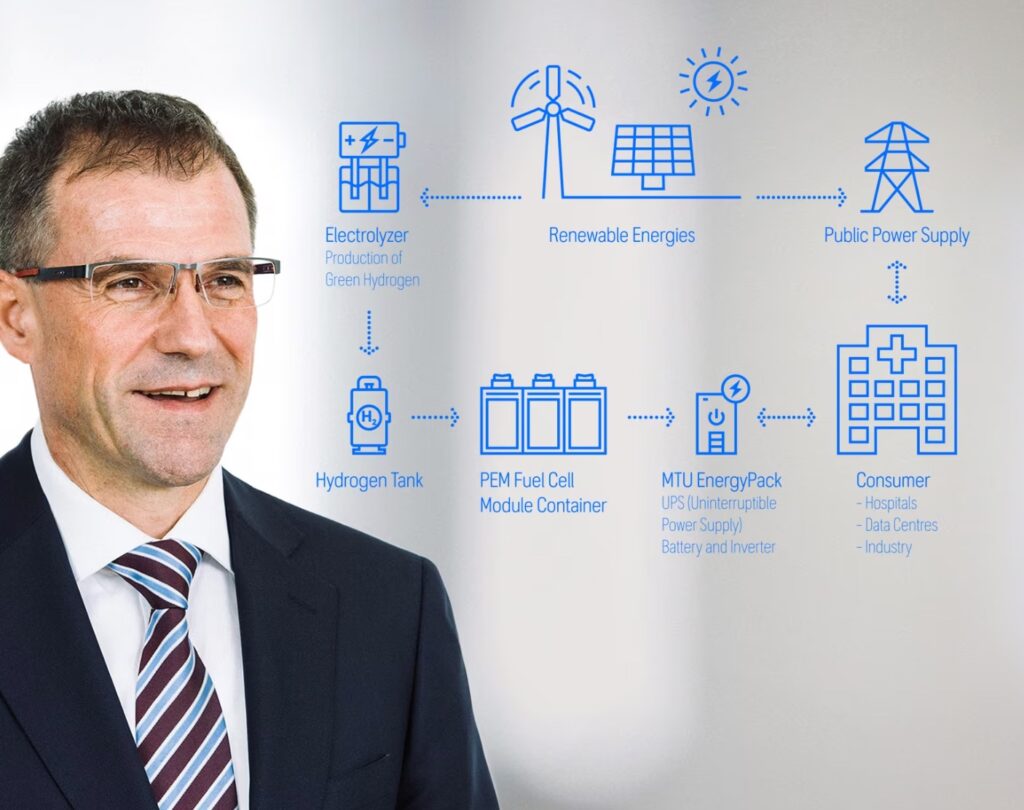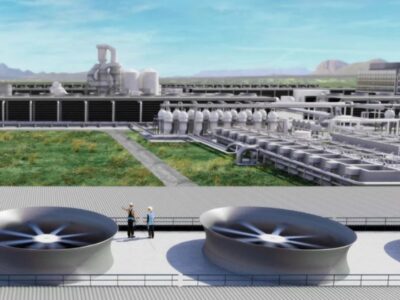Engine maker Rolls-Royce has successfully tested one of its engines with 100% hydrogen. Its 12-cylinder gas variant of the mtu Series 4000 L64 engine passed the first test runs exclusively on hydrogen, producing good combustion characteristics, power, efficiency, and emissions.
The Rolls-Royce Power Systems business unit performed the tests. Rolls-Royce plans to install the engines at the German inland port of Duisburg. It has partnered with several companies to build a hydrogen-based supply network for a new terminal, which will be ready in 2024.

Duisport plans to generate most of its future electricity needs from hydrogen, thus achieving its carbon-neutral goals. It will use two combined heat and power plants with mtu Series 4000 hydrogen engines. In addition, it will employ three mtu fuel cell systems to generate electricity. This will provide a total capacity of 3.5 megawatts.
Hydrogen engines are also expected to be used on superyachts by 2026, reports SuperYacht Times. Luxury yacht manufacturers Sanlorenzo and Lürssen Yachts have reportedly signed exclusive agreements to use the first hydrogen mtu engines.

“This engine will serve the market demand for hydrogen solutions in the energy transition and will be available to our customers as a reliable and clean power source for gensets and combined heat and power plants,” said Tobias Ostermaier, president of Stationary Power Solutions, Rolls-Royce business unit Power System.
The advantage of hydrogen is that it can store large amounts of clean energy from sources such as wind and solar for long periods.
When renewable energy demand is low, excess energy can be used to convert water to hydrogen. Then, when energy demand is high, this hydrogen can be used to balance out the energy supply.
“We see hydrogen as one of the central elements of the energy transition,” said Dr. Jörg Stratmann, CEO of Rolls-Royce Power Systems. “It can be used for both storage of excess energy and as a fuel, not only for engines but fuel cells and cogeneration plants to generate climate-neutral electricity and heat.”

Electrolyzers help convert water to hydrogen by using renewable energy from the sun or wind. Rolls-Royce is developing mtu electrolyzers that can handle inputs of clean energy of up to 2 megawatts, with the possibility to scale them to over 100 megawatts. In addition, the company also acquired a 54% stake in Hoeller Electrolyzer to help it produce hydrogen cheaply and on a large scale.
“Hydrogen contains no carbon and cannot produce carbon dioxide when powering fuel cells or hydrogen engines,” noted Armin Fürderer, head of net zero solutions at Rolls-Royce’s Power Systems, in the 2022 Hydrogen Report, produced by Hydrogen Europe and Revolve. “The trick, though, is to ensure that no CO2 is produced during production of the hydrogen – as is the case when hydrogen is obtained from natural gas.”
By generating “green” hydrogen, no carbon emissions are released. This is why excess electricity from wind and solar farms used in electrolyzers to generate hydrogen creates zero carbon emissions.
The collected hydrogen can then be used in fuel cells or to power hydrogen engines. It can then be fed into the grid or used to power vehicles or ships, explains the 2022 Hydrogen Report.

For the testing of the Rolls-Royce Series 4000 engine, certain engine components were modified. Those include fuel injection, turbocharging, as well as piston design and control. By using green hydrogen, Rolls-Royce’s mtu engines will be able to be operated in a carbon-neutral way. For companies that already have gas engines installed, Rolls-Royce provides a conversion solution.
“We are very pleased with the rapid progress,” said Andrea Prospero, an engineer at Rolls-Royce responsible for the development of the hydrogen engine. “The very low engine emissions are well below the strict EU limits, no exhaust gas after treatment is required.”





